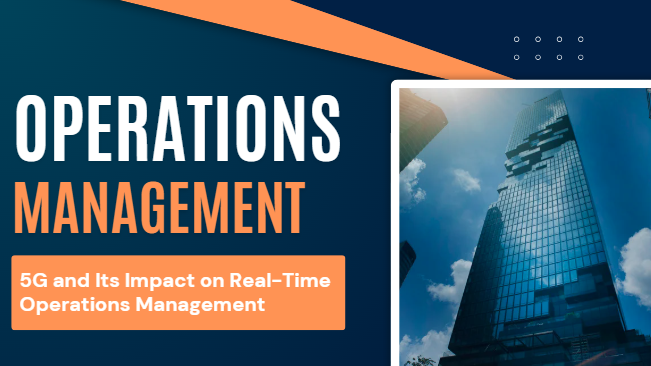The Covid-19 crisis has caused a major disruption in trade, health, finance, educational systems, businesses and society worldwide. The global supply chains were challenged by supply and demand imbalance, logistics disruptions, rising commodity prices, port congestion, and changing customer behaviour.
The pandemic was a test for the commercial, financial, operational and organisational strength of many companies around the world. Today, as the effects of the pandemic continue to impact the global supply chain, many of these challenges are still evident.
Companies around the globe are striving to optimise the execution, lower risks, improve proficiency and find out ways to gain a competitive advantage. To attain these goals, it is essential to overcome the current supply chain management challenges and eventually lean towards building a resilient supply chain network.
So where do organisations focus their efforts, resources and investment? Today, given the current market scenario, it is essential that organisations adapt to the latest alterations in market trends and have innovative approaches. Below listed are the latest Supply Chain Management trends for 2022 to build a moThe digitalisation resilient supply chain.
Digitalisation of Supply Chain:
Businesses need to transform their supply chains in order to manage inventory and respond to short-term disruptions and changes in the market. Digital processes make it easier to get accurate data and enhance visibility, which helps businesses adapt and improve faster.
The advantages of Digitising Supply Chains are;
- Acceleration in Innovation
- Increased Productivity and Efficiency
- End-to-end customer engagement
- Organisational Flexibility
- Better Decision making
- Increase in Automation
The digital transformation of Supply Chain Management has proven to escalate growth, reduce risk and optimise cost. According to research firm Gartner, half of all logistics & supply chain organisations will invest in artificial intelligence (AI) and advanced analytics by 2024.
Enhanced Forecasting and Planning:
Demand Forecasting is one of the most difficult aspects and plays an important role in effective supply chain management. The pandemic, natural disasters, delays in product delivery, and the uncertainty of customer choice have made it quite challenging to forecast market demand. The demand this year is expected to be different from the past few years and therefore relying on previous historical data to predict future demand might be tricky. Hence, adapting to new and innovative ways of forecasting is quite essential.
Demand forecasting trends in the future are as follows –
- Using AI to improve predictions
- Adapting to the iQ system
- Analysing order history
- Consider Elasticity in Inventory
Advanced Automation:
Autonomous vehicles and robotics are becoming increasingly common in the logistics and supply chain sector, and are expected to be a major trend in 2022. Along with this, the use of robotics in logistics offers more opportunities and an overall increase in productivity. Automated equipment in storage, transportation, and delivery has speeded up workflow and made the supply chain more efficient.
Expanding E-Commerce market:
E-Commerce has widely progressed. Online shopping is now part of the mainstream lifestyle and if companies today have not already set up e-commerce systems, they may see themselves fall behind as we move past 2022.
Today, supply chain management teams are investing in building or purchasing CRM tools that enhance their ability to maintain their stock availability and meet customers’ ever-growing demands. Research reports suggested that 45% of businesses have already adapted to inventory and network optimization tools that provide a precise overview of their stock.
Thriving Cloud Technology:
Cloud technology has seen tremendous growth during the pandemic and is estimated to be worth $1250 billion by 2028. In Logistics and Supply Chain management, companies have been using cloud computing to gain a competitive advantage, improve their operations and reduce costs. Cloud computing solutions that are delivered as Software as a Service (SaaS) can help you save money, work faster, and automate tasks easily. It can also help you scale up your operations more effectively.
Focus on Sustainability:
The millennials and gen-z consumers have a predominantly sustainability-centric approach in their purchases. Customers today question where their products come from and what they are made of. The positive trend of #gogreen and opting for sustainable products have made businesses more conscious of their sustainability plans. Taking the following actions across your supply chain will help you towards building a resilient supply chain;
- Bringing Innovation in product design and packaging – lowers companies’ overall carbon footprint
- Increase efficiency in the use of operational resources – using business intelligence tools for evaluating operations
- Optimised Supply Chain network – lower transportation costs and carbon emission by increasing localised sourcing of raw material
Upgrade your supply chain managerial skills:
Supply chain activities of an organisation include planning, management, collection, & connection of resources (human, material, information and financial).
A skilled logistics manager or supply chain manager is responsible for coordinating and communicating between different parts of the supply chain.
To upskill yourself, top distance learning institutes like MIT School of Distance Education offer Post Graduate Diploma in Logistics and Supply Chain Management & Post Graduate Executive Program in Global Logistics and Supply Chain Management. The programs focus on the key aspects of supply chain management while incorporating the tools, best practices and the latest developments in the sector through expert guidance.
Understanding the application of AI, analytical software and machine learning are some of the many learning outcomes of the program.


